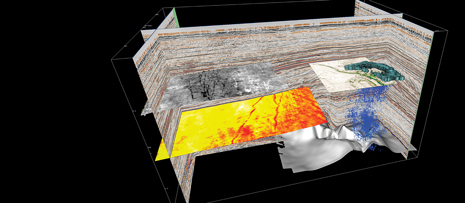|
Surely, not every intrepid entrepreneur sets out to build an empire on the idea that, at the end of the day, the fruits of his or her labor will be given away for free. But, that no-upfront-cost business model, which the company refers to as “freemium,” has taken dGB Earth Sciences from a two-man outfit, to a company with a global footprint over the last two decades.
Getting its start in 1995, dGB has since made a place for itself as a seismic interpretation solution provider for the oil and gas industry; its signature product offering is an open-source platform called OpendTect—pronounced “open detect”—which can be downloaded, at no cost, online. The company is the brainchild of founders Paul de Groot and Bert Bril, and takes its distinctive lowercase name styling from the combination of the two men’s surnames. OpendTect, and dGB’s other software products and packages enable users to leverage technology to get a better understanding of the oil field, to better understand what to do in the oil field. Since September 2009, more than 140,000 copies of OpendTect have been downloaded, and one of the keys to unlocking the full potential of these interpretation capabilities, and dGB’s financial success, boils down to one thing: plug-ins. With the free product alone, the company says that the majority of users can carry out highly sophisticated interpretation. But, the plug-ins, which are offered through yearly or monthly licenses, can provide an added layer of interpretation and understanding for more specific applications. One of dGB’s most popular plug-ins is called HorizonCube, which “increases the number of mapped horizons through semi-automated techniques.” In short, it helps maximize the potential of high-resolution seismic data, so that, when it comes time for a user to move forward in an operation, they can do so with greater confidence in their interpretations. The company said it expects to release the latest version of OpendTect with significant advances to HorizonCube in October. But, it is not simply the fact that OpendTect and its various plug-ins exist that is solely important. Rather, as dGB CEO Kristofer Tingdahl, PhD, sees it, it is the potential within the software’s readily accessible, open-source code, combined with user ingenuity, which presents real opportunity. A core element of dGB’s operating model is the partnerships that it forms and maintains with both software companies and operators. In fact, HorizonCube was influenced by one such partnership, a Sequence Stratigraphic Interpretation System (SSIS) consortium, which involved sponsorship from Saudi Aramco, Statoil, OMV, MOL and RocOil. And, it would not necessarily have to be through a direct partnership with dGB from which such innovations would result. Tingdahl said the idea that there is an element “for the common good” is ingrained into the company, following with its decision to offer its core product for free, instead reaping profits from licensing plug-ins, and providing maintenance, support and consulting, among other things. He said he is driven by an overarching desire “to see science grow and good technology grow.” In an effort to improve on its own design, the company recently announced that it would be working with an Austrian research institute and an Austrian E&P to “extend both the capabilities and utilization of OpendTect.” Users already have the ability, to take the source code, and make improvements and extensions of their own. Both of these paths, whether through dGB or not, serve the company’s founding idealism, to “stimulate research, and shorten the gap between academic research and operational deployment.” |
- Prices and governmental policies combine to stymie Canadian upstream growth (February 2024)
- U.S. producing gas wells increase despite low prices (February 2024)
- U.S. drilling: More of the same expected (February 2024)
- U.S. oil and natural gas production hits record highs (February 2024)
- U.S. upstream muddles along, with an eye toward 2024 (September 2023)
- Canada's upstream soldiers on despite governmental interference (September 2023)



